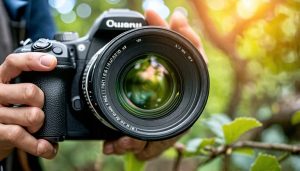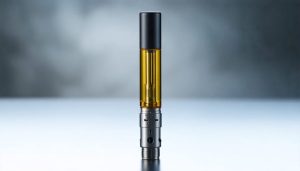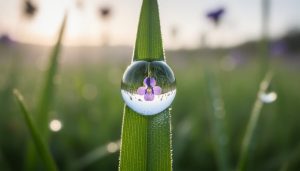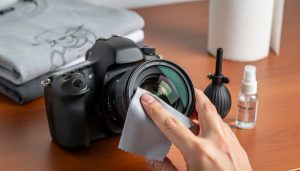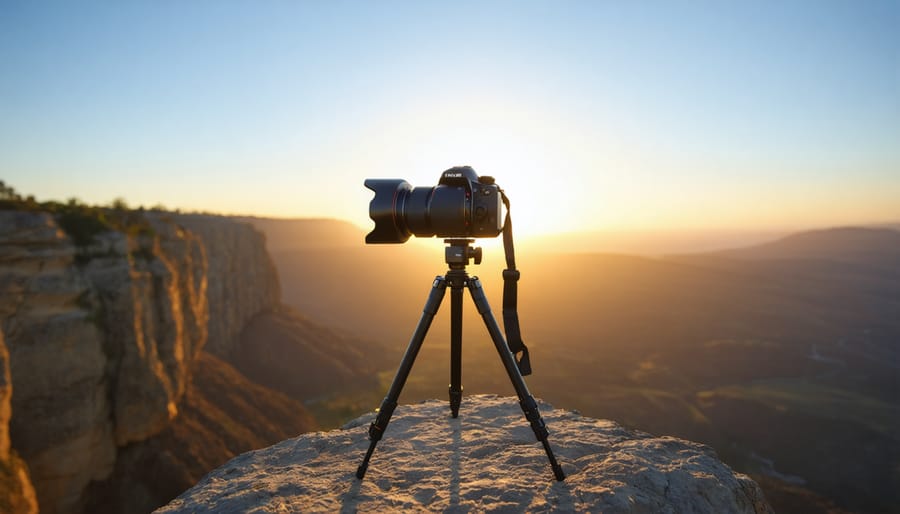
Use a lens hood to eliminate stray light and reduce lens flare, an essential accessory for outdoor photography. Match the hood to your specific lens model for optimal coverage without vignetting. Rotate the hood so it doesn’t obstruct the frame when shooting vertically. Keep the hood on your lens at all times to protect the front element from impacts, scratches, and fingerprints.
What is a Camera Sun Hood?
Types of Camera Sun Hoods
There are several types of camera sun hoods to suit different lenses and shooting situations. Cylindrical hoods are the most common, featuring a simple round shape that extends beyond the lens to block stray light. These work well for general purpose shooting and are often included with lenses.
Petal hoods have a more contoured shape, with cut-outs that correspond to the edges of the frame. This design provides maximum coverage without vignetting and is ideal for wide-angle lenses. The unique shape also allows for easier storage when reversed on the lens.
Rubber lens hoods offer a flexible, collapsible option that can be adjusted to fit various lens sizes. They’re handy for shooters who frequently change lenses or need a compact solution. However, rubber hoods may not provide as much flare protection as rigid hoods in challenging light conditions.
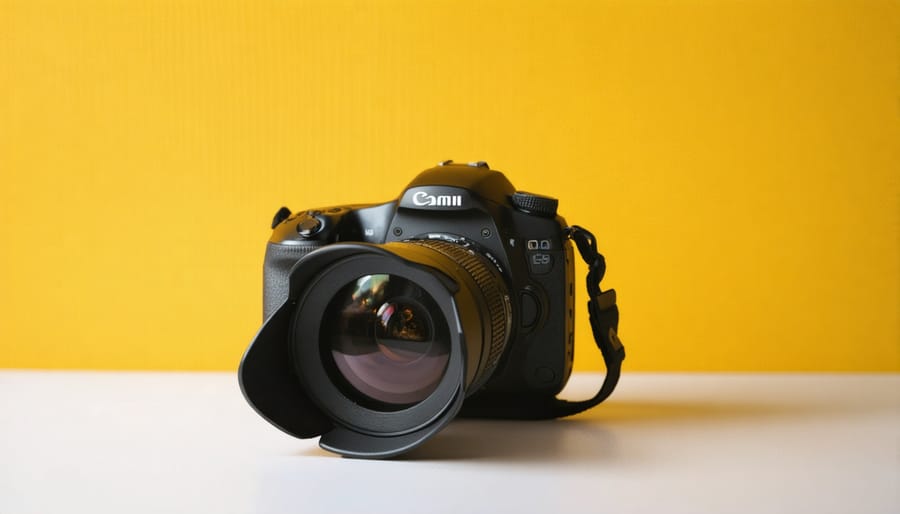
Compatibility and Sizing
Ensuring compatibility between your sun hood and camera lens is crucial for optimal performance. Most sun hoods are designed for specific lens models, so check your lens specifications or consult the manufacturer’s website for the recommended size. The hood should securely attach to the lens without wobbling or obstructing any controls.
Lens diameter and focal length are key factors in determining hood size. Hoods are typically categorized by these measurements, such as “77mm wide-angle” or “telephoto zoom.” When in doubt, opt for a slightly larger hood that can be adjusted rather than one that’s too small to be effective. With the right fit, your sun hood will be a reliable tool for improving image quality in bright conditions.
Benefits of Using a Camera Sun Hood
Minimizing Lens Flare
A sun hood helps minimize lens flare by blocking stray light from entering the lens at sharp angles. When shooting towards a bright light source like the sun, light can reflect and scatter inside the lens, causing unwanted lens flare, glare, and reduced contrast. By extending past the front of the lens, a hood casts a protective shadow, preventing most of this problematic light from reaching the glass in the first place. This is especially useful when the sun is just outside the frame or when shooting backlit subjects. Hoods are carefully designed for each lens’s angle of view to provide maximum flare reduction without vignetting. While lens coatings also help control flare, a hood provides a valuable first line of defense. Together, they allow you to shoot more directly into the light while maintaining high image quality and contrast.
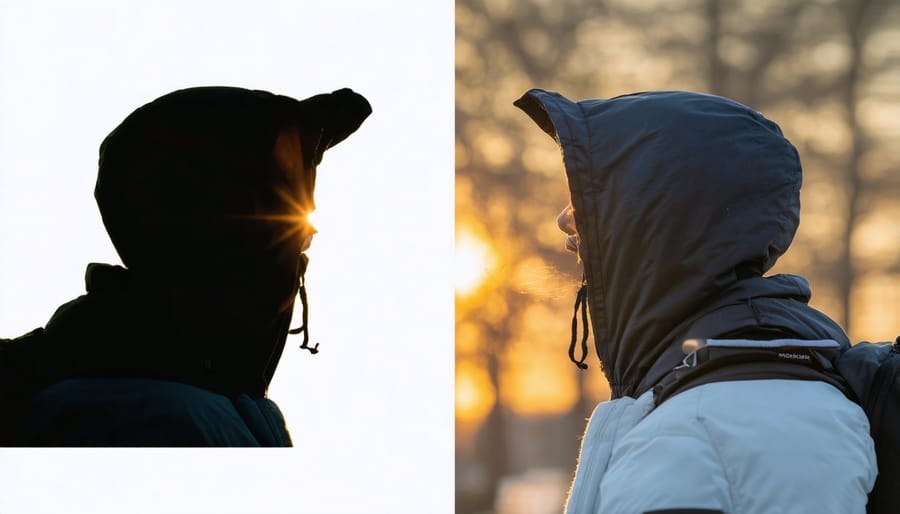
Enhancing Contrast and Colors
By reducing lens flare, a camera sun hood allows more light from the intended scene to reach the sensor, resulting in images with enhanced contrast and color saturation. Stray light from outside the frame can wash out colors and decrease contrast. A hood minimizes this effect, helping to retain the vibrant hues and tonal range that make your photos pop. You’ll notice richer blacks, brighter highlights, and overall better color fidelity, especially in challenging lighting conditions. This is particularly beneficial for landscape and nature photography, where you want to capture the true essence of a scene with all its natural beauty and depth.
Protecting the Lens
In addition to reducing lens flare, a camera sun hood provides an extra layer of protection for your valuable lens. The hood’s physical barrier helps shield the front element from accidental bumps, scratches, and fingerprints. When shooting in challenging environments like crowded events or outdoor adventures, the hood acts as a first line of defense against potential impacts that could damage your lens. It also helps keep dust, moisture, and other contaminants from reaching the lens surface, making it easier to maintain a clean, clear image. Even if you’re using a protective UV filter, a sun hood offers additional peace of mind and can save you costly repairs in the long run. So, whether you’re navigating a busy street or trekking through nature, a sun hood is a simple yet effective way to safeguard your lens investment while ensuring optimal image quality.
When to Use a Camera Sun Hood
Outdoor Photography
A sun hood is a vital tool for any outdoor photographer shooting in bright sunlight. Without a hood, direct light hitting the front lens element can cause unwanted lens flare, reduced contrast, and washed out colors in your images. By attaching a sun hood, you create a physical barrier that shades the lens, minimizing stray light and ensuring your photos maintain optimal image quality.
In challenging lighting situations like shooting towards the sun, a lens hood makes the difference between a usable shot and one ruined by flare. It also provides extra protection for your valuable front lens element from dust, moisture, and accidental bumps. For landscape, nature, and wildlife photographers spending long hours in unpredictable outdoor conditions, a sun hood is a small but indispensable accessory to keep in your kit.
When choosing a sun hood, opt for one specifically designed for your lens’ focal length and diameter to ensure a proper fit without vignetting. With this affordable piece of gear in your camera bag, you’ll be ready to tackle even the harshest lighting with confidence and come away with professional-caliber outdoor images.
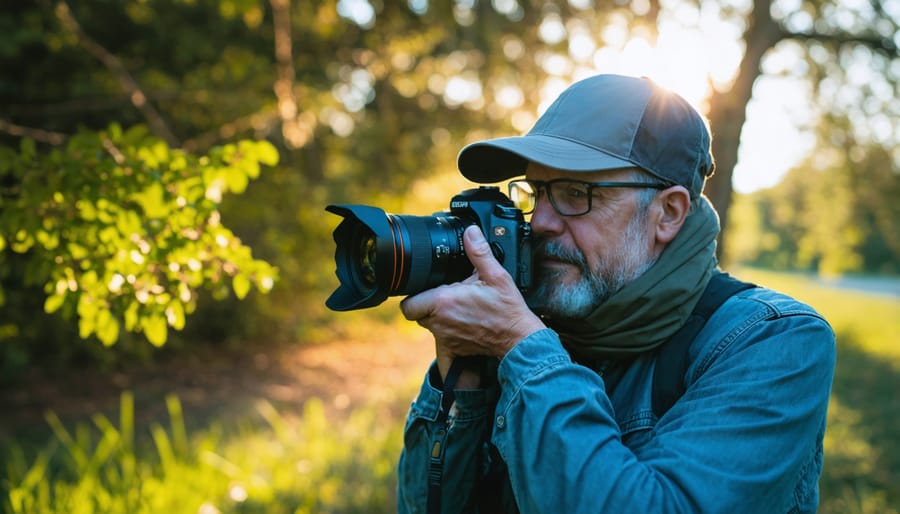
Backlit Scenes
When shooting backlit scenes, where the primary light source is behind or to the side of your subject, a camera sun hood becomes an essential tool. In these situations, stray light rays can easily strike the front element of your lens at an angle, causing unwanted lens flare, reduced contrast, and washed-out colors. By extending the hood beyond the lens, you effectively block these peripheral light rays, allowing only the light from your intended scene to reach the lens. This is especially crucial during golden hour photography when the sun is low on the horizon, casting long shadows and intense, directional light. With a hood in place, you can capture the mood and atmosphere of backlit scenes without compromising image quality. Whether you’re shooting portraits with a rim light effect or landscapes with the sun peeking through trees, a camera sun hood helps you harness the creative potential of backlighting while maintaining the clarity and impact of your photographs.
Choosing the Right Camera Sun Hood
Brand Name vs. Third-Party Hoods
When choosing a camera sun hood, you’ll find options from both the original camera manufacturer and third-party brands. Brand name hoods are typically more expensive but offer a guaranteed fit and quality construction that matches your lens. They undergo rigorous testing to ensure optimal performance and durability.
On the other hand, third-party hoods can be significantly more affordable while still providing adequate protection from glare and flare. However, the fit and finish may not be as precise, and the materials used could be of lower quality. It’s essential to read reviews and choose reputable third-party brands to ensure compatibility and effectiveness.
Ultimately, the decision between brand name and third-party hoods depends on your budget and priorities. If you want the assurance of a perfect fit and top-notch quality, opt for the brand name hood. But if cost is a primary concern, carefully selected third-party alternatives can offer sufficient performance at a more accessible price point.
Material and Build Quality
When evaluating sun hoods, pay close attention to the materials and build quality. High-quality sun hoods are typically made from durable, lightweight materials like carbon fiber, aluminum, or high-grade plastic. Look for hoods with a solid construction that can withstand the rigors of outdoor photography. Avoid flimsy or poorly made hoods that may easily break or come loose. Well-designed sun hoods should securely attach to your lens without any wobbling or play. Consider models with a non-reflective, matte black interior to minimize internal reflections. Investing in a well-built sun hood ensures reliable performance and long-term protection for your valuable lenses.
Conclusion
In conclusion, a camera sun hood is an essential accessory for any photographer looking to capture stunning outdoor images. By shielding the lens from stray light and reducing lens flare, a sun hood helps maintain image contrast, color saturation, and overall clarity. Whether you’re a professional photographer or a passionate hobbyist, investing in a high-quality sun hood that fits your specific lens can significantly improve your photography game. Remember to consider factors such as compatibility, size, and material when choosing the perfect sun hood for your needs. With the right sun hood in your camera bag, you’ll be well-equipped to take on any outdoor photography challenge and create images that truly shine.



